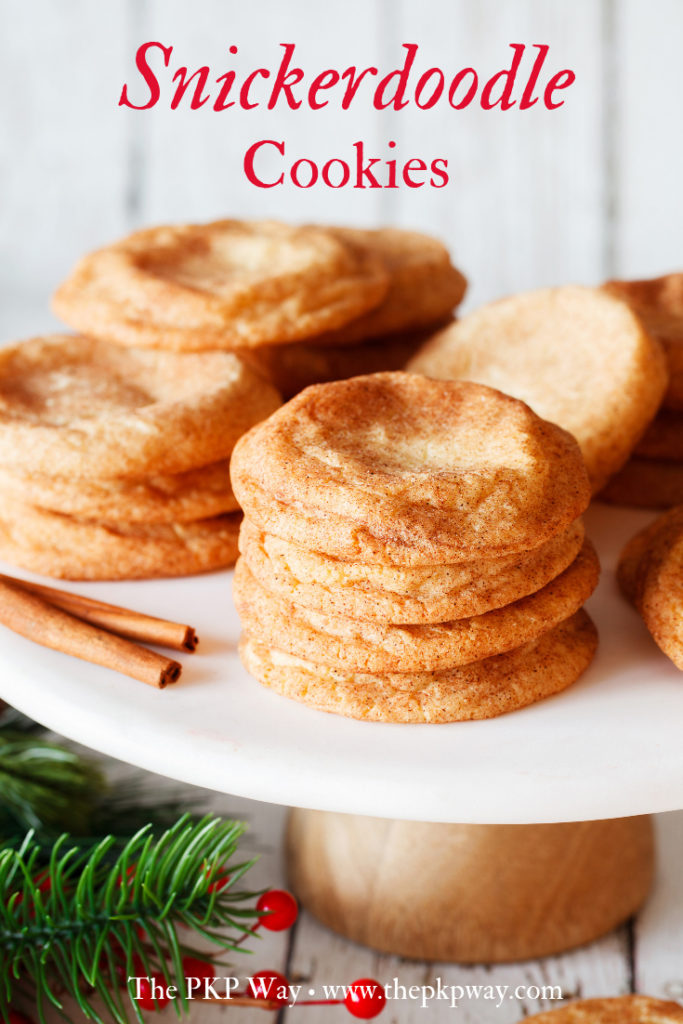Soft and thick with a cinnamon and sugar coating, these snickerdoodle cookies are all you need for holiday festivities, cookie swaps, and year-round potlucks.
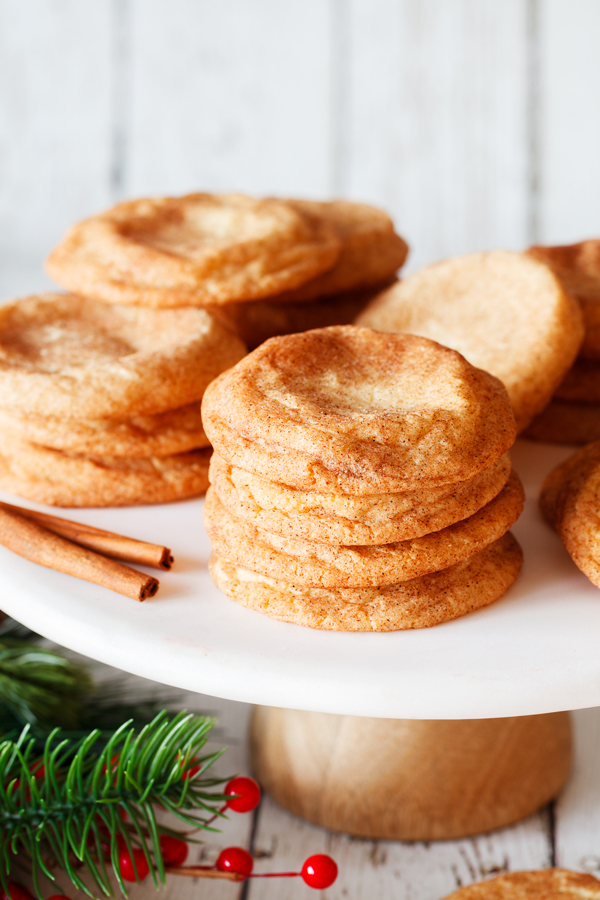
The origin of snickerdoodle cookies is debatable. Some say they are of Dutch-German descent while others say they originated from New England. One thing’s for sure, snickerdoodle cookies are one of the most beloved cookies in America.
Being one of America’s most favorite cookies, a fool-proof snickerdoodle cookie recipe deserves a place in every home cook’s recipe box.
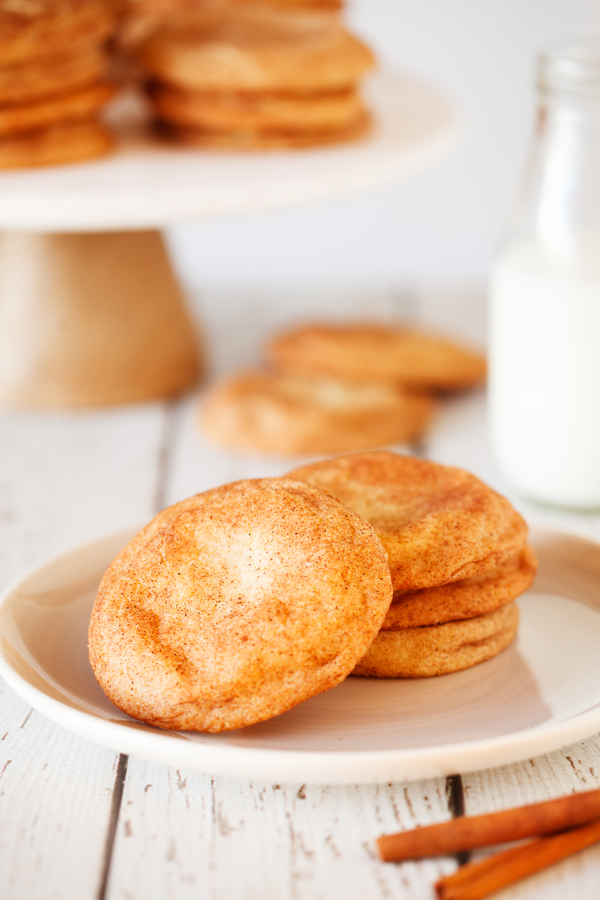
I tested and tested this recipe until I got the right combination of ingredients and directions to produce a thick and soft cookie, with crisp edges and the characteristic tang. My kitchen was overflowing with snickerdoodle cookies and I was giving them away left and right! I was just about to table it but somehow found it in me to give it one more try.
That last attempt was THE recipe. The snickerdoodle cookies had crisp edges, a thick, soft and chewy center, a slight tang and cinnamon and sugar goodness with very bite. I’m excited to be sharing it with you today in hopes that it will earn a place in your recipe box.
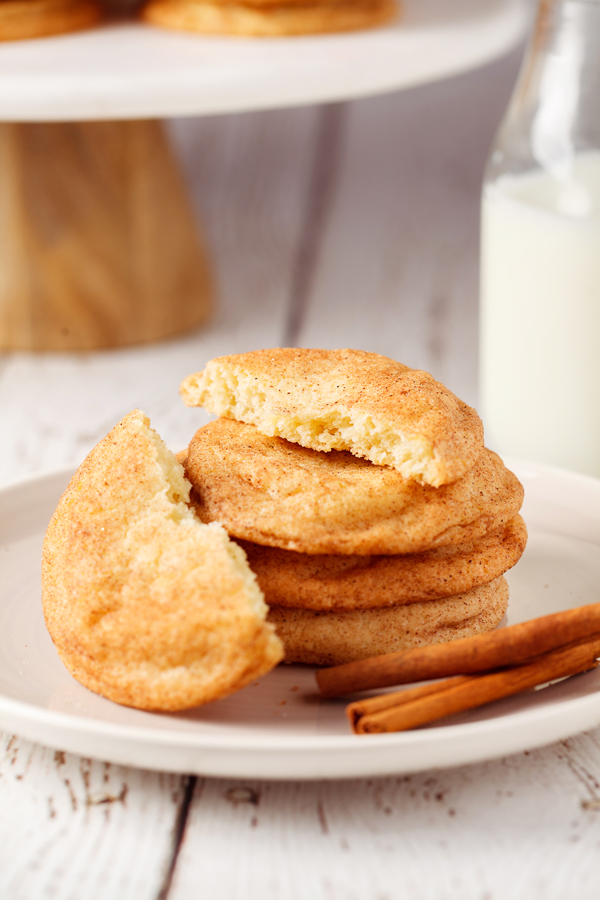
How to Make Snickerdoodle Cookies
Start by combining the dry ingredients – flour, cream of tartar, baking soda, and salt.
You may have heard that the combination of cream of tartar and baking soda can be used as a substitute for baking powder when in a bind. While this is true (1 teaspoon baking powder = ¼ teaspoon baking soda + ½ teaspoon cream of tartar), you don’t want to opt for baking powder in place of the two ingredients for these snickerdoodles.
The cream of tartar is what will give the snickerdoodle cookies their characteristic tang. Don’t skip it!
Next, cream together butter and sugar using either a hand mixer or a stand mixer. There are several snickerdoodle cookie recipes that call for shortening or a combination of butter and shortening. I found that using only butter produced the best flavor. No shortening here! Just plain, simple, delicious butter.
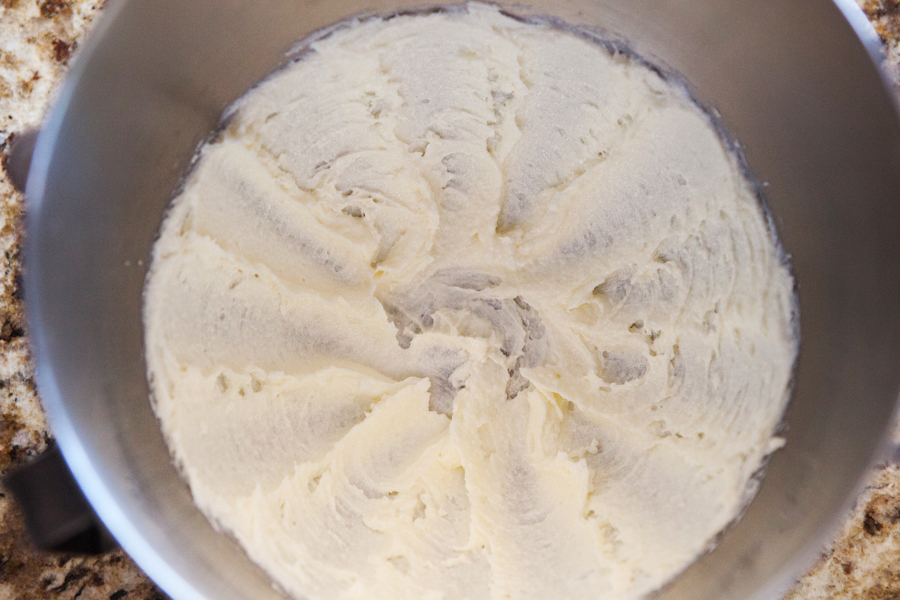
Pro-tip: Make sure your butter is room temperature. If you plan ahead, take the butter out of the refrigerator for at least 1 hour before using. Or, if you’re like me and can barely figure out what’s happening in the next 5 minutes, let alone the next hour, microwave the butter 5 seconds at a time, flipping to its adjacent side in between each burst.
Once creamed, add in the eggs and vanilla to bring out even more flavor.
Pro-tip: Also make sure the eggs are at room temperature. This will help the eggs mix in with the dough much easier. To quickly warm the eggs from the refrigerator, place them in a bowl of warm water for a few minutes. I just use warm water from the tap and submerge the eggs in the water before beginning the recipe. By the time I need the eggs, they’re at the perfect temperature.
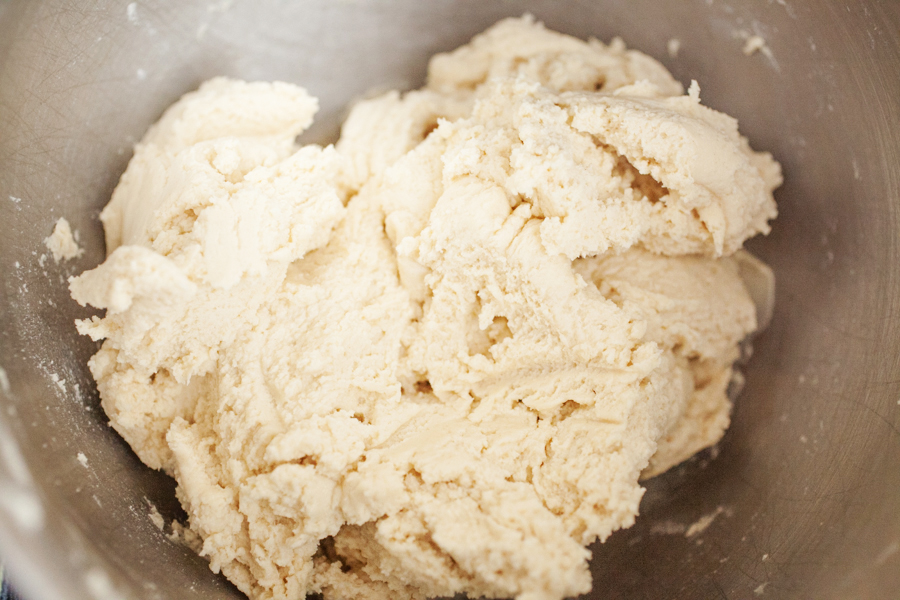
Slowly add the flour to the butter mixture.
Now it’s time to coat and form the dough balls.
Prepare the cinnamon and sugar coating in a small and shallow bowl. Using this type of bowl will assist in the coating process.
Take 2 tablespoons of dough or use a cookie scoop and roll it into a ball. Then, coat the entire dough ball in the cinnamon and sugar mixture. You can stop here, but I like when snickerdoodles are extra heavy on the coating, so I give them a second coating.
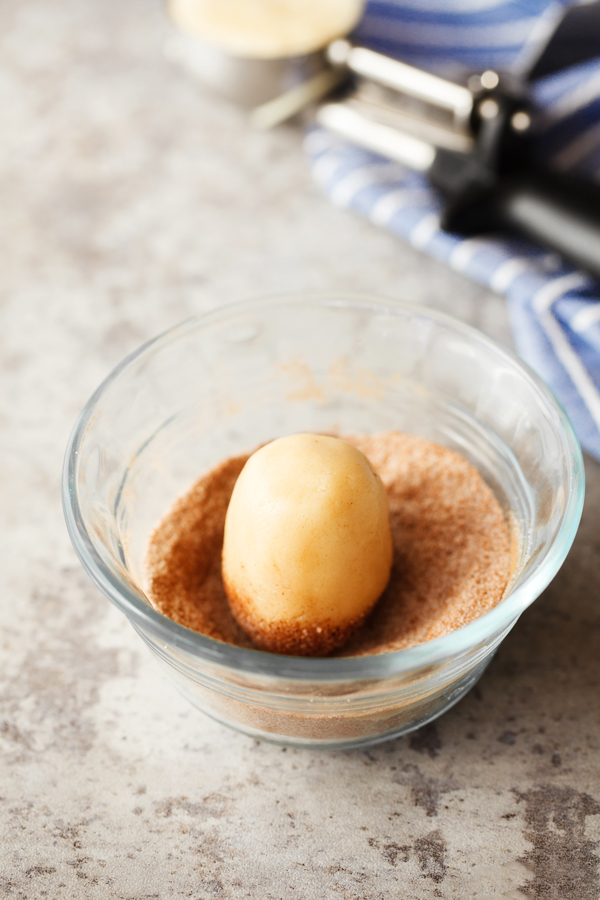
To give them a second coating, toss the coated dough ball in between cupped hands for a few seconds. This will help press in the first coating. Then, roll the dough ball once more in the coating.
Shape the ball into an oblong cylinder and place on a prepared baking sheet. Making the dough oblong instead of spherical slows down the spread while in the oven and thus contributes to the final thickness of the cookie.
If those steps are too much trouble, alternatively you can shape the dough into an oblong shape and give it just one coat in the cinnamon and sugar mixture.
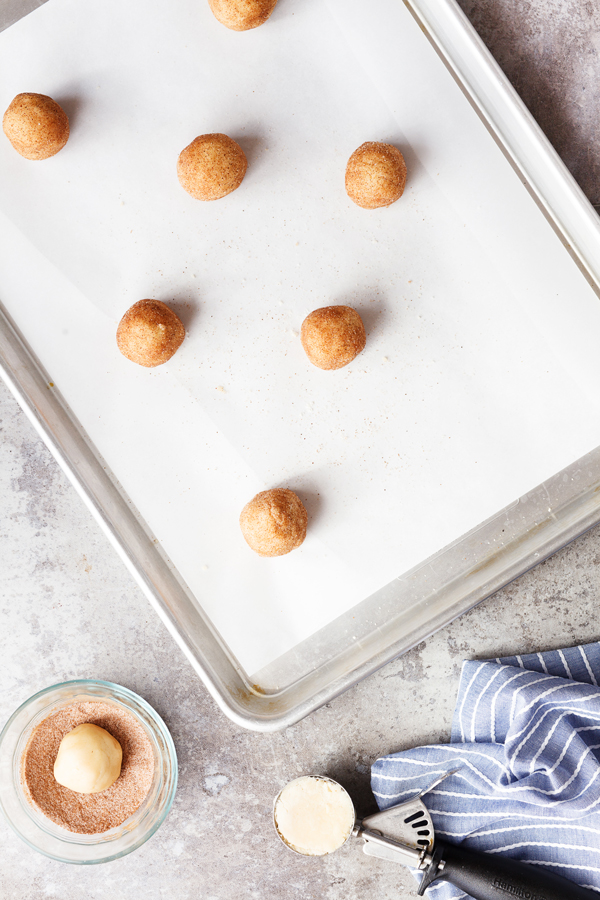
Once all the dough balls have been formed, bake them in a 400 °F oven. The high temperature also helped with the thickness of the cookie. While testing, I found that lower temperature ovens (e.g. 325 °F) made thinner cookies. The cookies had time to spread before they could finish baking. In a high temperature oven, the cookies finish cooking faster than they can spread, ultimately leading to a thicker cookie.
Bake them for 10 to 11 minutes. They should be set and crisp on the edges and puffy and almost underdone in the center. Do not over bake the cookies. Remove the baking sheet from the oven and leave the cookies on the baking sheet for 5 minutes before transferring to a cooling rack. The radiant heat on the baking sheet will be just enough extra heat to continue cooking the cookies without over baking them.
And there you have it – a classic snickerdoodle cookie recipe worthy for your kitchen :)
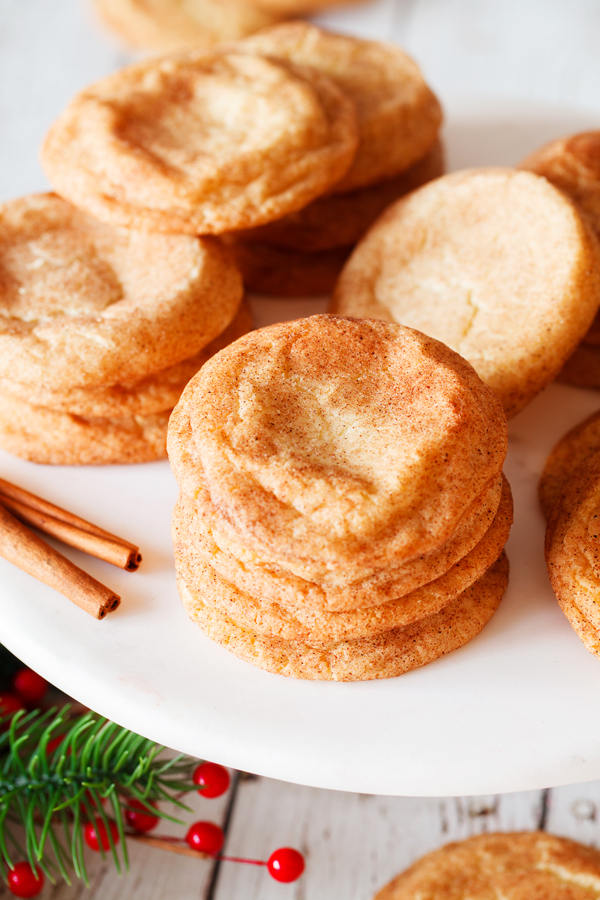
Snickerdoodle Cookies
Ingredients
- 2 3/4 cups all-purpose flour
- 2 teaspoons cream of tartar
- 1 teaspoon baking soda
- 1/2 teaspoon salt
- 1 cup (2 sticks) unsalted butter, room temperature
- 1 3/4 cups granulated sugar, divided
- 2 eggs, room temperature
- 1 teaspoon vanilla extract
- 1 tablespoon ground cinnamon
Instructions
- Preheat oven to 400°F and line two baking sheets with parchment paper or silpat.
- In a large bowl, whisk together the flour, cream of tartar, baking soda and salt. Set aside.
- In the bowl of a stand mixer fitted with the paddle attachment, cream together the butter and 1 1/2 cups of sugar on medium speed until creamy.
- Scrape down the sides of the bowl and while on low speed, add the eggs, one at a time. Scrape down the sides of the bowl and add the vanilla.
- Slowly add in the flour mixture until just a few flour streaks remain. Turn off the mixer and give the dough a final stir by hand to mix in the remaining flour streaks.
- In a small shallow bowl, mix together the remaining 1/4 cup of sugar and cinnamon until thoroughly blended.
- Working with 2 tablespoons of dough at a time, roll the dough into a ball and coat in the cinnamon sugar mixture. Toss the coated ball in between cupped hands and give it a second coat in the cinnamon sugar mixture. Place the dough on the prepared baking sheet. Repeat with the remaining dough, spacing about 2 inches apart on the baking sheet.
- Bake for 10 to 11 minutes, until the edges are just set and the centers are puffy. Allow to cool on the pan for 5 minutes before transferring to a cooling rack to cool completely.
Notes
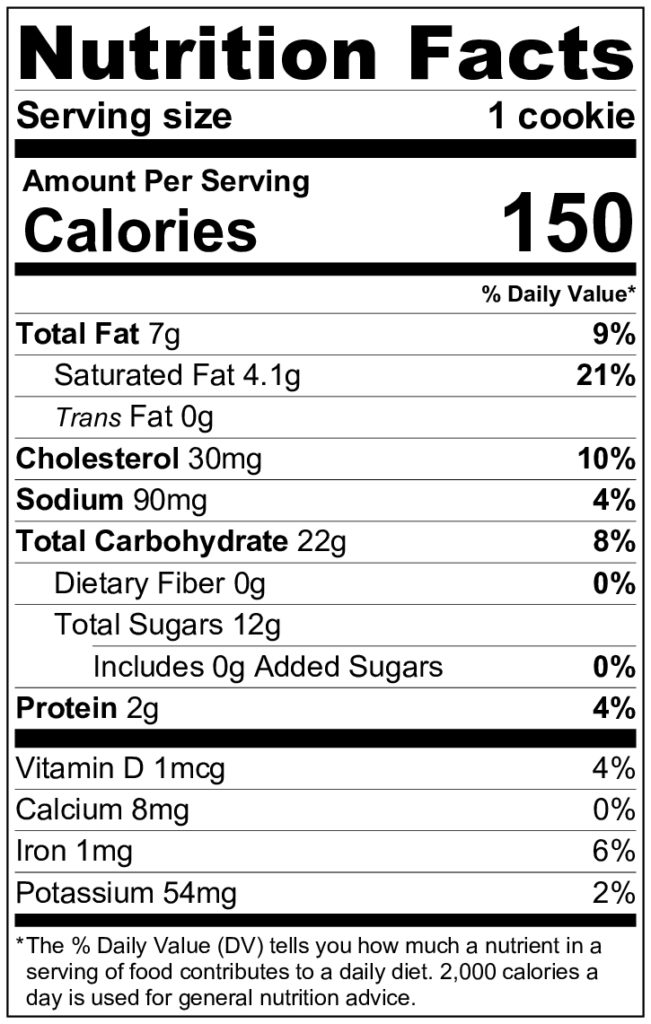
Note: This page contains affiliate links that help make The PKP Way possible. Should you choose to purchase anything via those links, I will receive a small commission paid by Amazon, not you.






